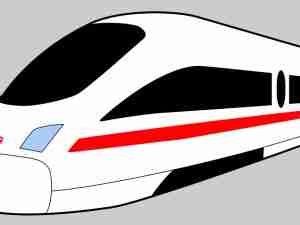By George Lauriat, Editor in Chief, AJOT
If necessity is the 'Mother of Invention,' then time is the Father, at least in the case of railroads. Started in 1992, almost overnight REZ-1 transformed how the rail industry handles its intermodal assets. The innovative solutions that REZ-1 developed were simply a case where necessity was just in the niche of time.
By the late 1980s, it was rapidly becoming a necessity for railroads to develop a new system to better manage their burgeoning intermodal business. Part of the reason for the growth in intermodal traffic was the emergence of third party non-asset based service providers, IMCs (Intermodal Management Companies). With IMC growth, time was becoming a significant issue for railroads. Equipment out of the system became the norm and tracking and billing for these assets represented a significant drain on the railroads. Lack of equipment tracking meant it was, in turn, difficult to assess equipment availability for shippers. Everything was on a first come, first serve basis. The equipment was available or it wasn't. The difficulty in tracking equipment led to problems with billings. How do you bill when you don't know whether the equipment was returned, or is still in the customers' possession?
Try it! You'll like it!
REZ-1 stepped in and made a simple proposition to the railroads: 'Try it! You'll like it,' a strategy the company still retains. During the first free trial, REZ-1 offered a radically new type of service to a three party joint equipment group that included Norfolk Southern (NS), Union Pacific (UP) and Conrail (prior to breakup). In the very simplest terms, REZ-1 provided the railroads with a real-time, online, system-to-system, application that could track their wayward chassis and containers. By being able track the intermodal equipment, REZ-1 could also expedite billing and collection for the railroads. The key was that (as the name implies) the shipper, drayage companies, IMC or agent railroad would 'reserve' equipment through the REZ-1 system. In turn, REZ-1 would communicate and update, on a 24/7/365 basis.
Railroad management saw the billing and collection as an important attribute of the system. Functionally, REZ-1 is an independent third party acting on behalf of the railroads. REZ-1's fee for service is either a daily management fee or transaction-based, or a combination, in addition to computer programming/systems maintenance fees. In essence, REZ-1 collects all the fees associated with the usage of the equipment from the IMCs on behalf of the railroads that supply the equipment. The company also facilitates settlement between railroads that share assets. One of the key elements that REZ-1 brings to the table is that in order to have an agreement with the railroads, and ultimately gain access to the system (ChannelSpeed) necessary to make an equipment reservation, the IMC must establish a direct draft account with REZ-1. Basically, an invoice is sent to an IMC. They have an opportunity to review it and make a dispute if necessary. REZ-1 then collects on the invoice via automatic draft. The entire process is paperless and extremely efficient because of REZ-1's ability to audit, edit, cleanse, and organize the incoming EDI information.
Another key element of the new service is that the railroads and their customers can utilize their own existing equipment and IT systems. By virtue of overall IT service capabilities, Newton, MA-based REZ-1 has launched a new niche business dubbed Application Service Provider (ASP). Other companies had similar programs but only on niche industry segments. REZ-1 is able to provide visibility and service throughout the entire intermodal process.
Marie Colbert, CEO/President of REZ-1 has been with the compa






